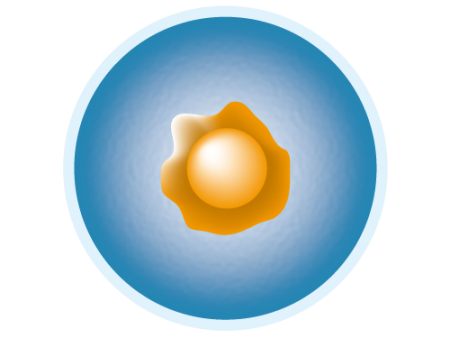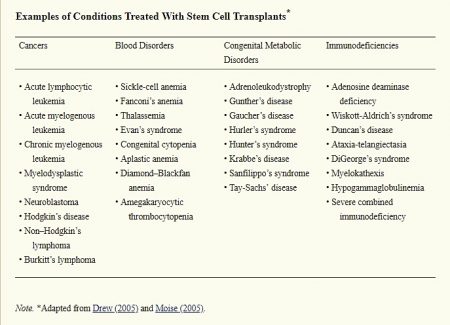July 23, 2018 – These days the medical and research literature abounds with stories about stem cells and the part they are playing in regenerative medicine, cures for cancer, and other treatments. Separating the hype from the reality, and the true science from flimflam artists is a useful exercise. I know because I am in search of a stem cell cure for an osteoarthritic knee rather than face replacement surgery with a mechanical joint implant.

Because stem cells are being heralded as the shape-shifters within our bodies, a universal panacea to cure almost everything that ails us. Biopharma companies recognize the money opportunity and are starting to bank them. Seen as the newest biopharmaceutical growth industry as opportunities to create new wonder drugs are narrowing, and as time runs out on exclusivity for so many of the drugs used globally, personal medical cures are all the rage. According to Market Reports World, analysts predict annual growth of stem cell banking at 12.76% from 2018 to 2022.
What are the market drivers?
- an aging population
- a growing body of knowledge about the body’s immunological systems and autoimmune diseases
- the general rise in cancer globally
- and diseases where conventional biopharmaceutical treatments have been less than efficacious
Where are stem cells being used in medicine today? By no means is the following a complete list but it is a good starting point.
- bone, skin and corneal diseases
- tissue grafts
- sickle cell anemia
- organ regeneration
- Alzheimer’s Disease
- Parkinson’s Disease
- heart disease
- sports medicine to speed up healing
- bone marrow transplants
- retinal and corneal diseases, blindness, and macular degeneration
- osteoarthritis
How legitimate are these stem cell therapies?
Some show great promise. Most recently, clinical trials using stem cells have created hope, not hype, for cures with patients suffering from childhood leukemia, sickle cell anemia, and dry macular degeneration. All of these stem cell treatments have come after more than a decade of animal studies followed by small-scale human clinical trials. In one example involving blindness from the death of rods and cones in the eye’s retina, transplanted stem cells repurposed themselves to replace the dying cells leading to the restimulation of optic nerve activity. These were stem cells harvested from the patient themselves and then cultured to increase their numbers before being injected into the retina.
Who are the players in the stem cell banking and treatment game, and where are they located? This list comes from Market Reports World with my added annotations:
- AMAG Pharmaceuticals, Waltham, Massachusetts – newborn stem cell preservation through Cord Blood Registry (R).
- Cellular Dynamics International, Madison, Wisconsin – a Fujifilm spinoff, with an adult stem cell banking program and doing research into bioprinting human tissues using stem cells.
- Cordlife, Singapore – describes itself as an insurance policy for new parents through cord blood stem cell storage and has recorded 18 successful stem-cell infusions in its 14-year history according to an article that appeared in Forbes in 2015.
- Cordvida, Brazil-based – offers cryopreservation of stem cells from cord blood and describes successful treatment of autism, cerebal palsy, having recorded eight stem-cell infusions used in transplants and experiments as of 2017 in Brazil and the United States.
- Cryo Stemcell, India-based. – offers umbilical cord, platelet-rich plasma, and stem cell banking services including cryopreservation of corneal stromal lenticules, and limbal stem cell therapy for leading eye hospitals.
- Cryo-Cell International, Florida-based – provides a five-compartment cord blood collection kit to save a newborn’s stem cells for use with more than one family member.
- Cryoviva India, Gurugram, India- providing cord blood stem cell processing and storage
- Cytori Therapeutics, San Diego – describes itself as a specialty therapeutics company harnessing stem and regenerative cells from adipose (body fat) tissue for applications such as fibrosis and wound repair.
- Global Cord Blood Corporation, Beijing, China – formerly known as China Cord Blood Corporation, provides cord blood stem cell storage services in China and the Asia Pacific region.
- Insception Lifebank, Toronto, Canada – cord blood and tissue stem cell storage bank, the largest facility of its type in Canada.
- LifeCell, India-based, offering diagnostic prenatal screening and cord blood stem cell cryopreservation.
- PerkinElmer, Waltham, Massachusetts – offers in addition to cord blood stem cell banking, stem cell cultivation and phenotypic screening.
- Reelabs – Mumbai, India – offering stem cell banking from cord blood, cord tissue, amniotic fluid and sac, and placenta, as well as stem cell therapies from leukemia to thalassemia, autism, diabetes, osteoarthritis, liver cirrhosis and more.
- Smart Cells International, West Drayton, UK – offering baby and adult stem cell storage options.
- Stemade Biotech, Mumbai, India – the first private dental stem cell bank in India, harvesting stem cells from the primary teeth of children and wisdom teeth for therapeutic treatment.
- StemCyte, Baldwin Park, California – a cord blood, cord tissue therapeutic company offering stem cell transplantation and therapy as well as a private cord blood bank
It remains unclear just how effective stem cell therapies will ultimately be. But there is no doubt that the use of these undifferentiated shape-shifters is altering the way numerous diseases are being treated. I have copied a table that appeared in an article entitled Umbilical Cord Blood: Information for Childbirth Educators. It was written and posted to The Journal of Perinatal Education in its winter 2011 issue. The list appearing below represents what was seen then as the potential uses of stem cell therapies in tackling a range of diseases.















